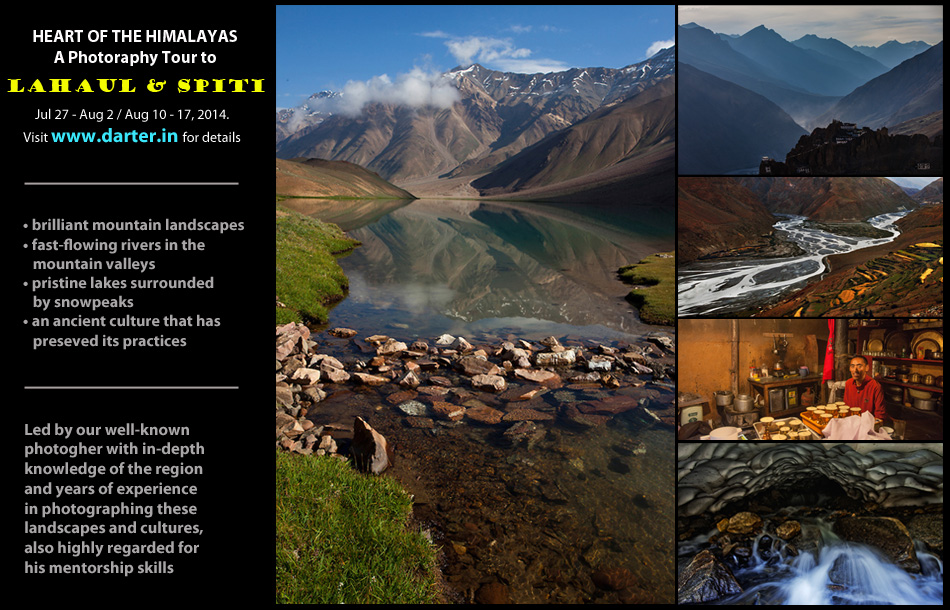My next Himalayan Photography Tour is to the finest mountain landscapes and cultural centers of Lahaul & Spiti in Himachal Pradesh – July/August 2014. Join me on this tour to learn the nuances of making great landscape images. See Heart of the Himalayas Lahaul & Spiti Photography Tour for details.
To get an idea of what this place is like, do read these posts I wrote about my journeys to the region.

My photography tour to the finest mountain landscapes and cultural centers of Lahaul & Spiti in Himachal (Jul/Aug 2014). Join us – see http://bit.ly/lahaul-spiti-phototour for details.
In July this year, I spent a week travelling through the high Himalayan region of Lahaul & Spiti in Himachal Pradesh. This was my fourth visit to the region and I was leading a small group of photography enthusiasts with me. Being a regular visitor to these places, I had had some definite ideas about the subjects that I wanted to shoot, the moods that I wanted to portray and also had a fairly good idea about the time of the day that would help me make those images.
In Dhankar Monastery, seen in the photograph, I was keen to portray the remoteness of the place and the precarious location where the monastery stood. I had also realized that the evening light from behind the monastery would help differentiate the crag on which the buildings were located and the high mountains that dominated the landscape behind it. Here is the image I created that evening. The dust rising from behind helped enhance the drama in the scene.

There is, in fact, much more drama than what is seen in the photograph. At the valley just below the monastery is the confluences of Spiti and Pin Rivers, and the view is fabulous from the place where I was shooting. Yet, I decided to exclude that from the frame, since having too many elements of interest may have driven away attention from the main story and would work counterproductive in this situation.
Bridges had fallen and the roads were cut off. A long line of waited for many hours hoping for things to get better. Buses were cancelled and they had no clear answers to when the services will resume. “It depends on the weather, sir,” was the fence-sitting answer from the person manning the phone at the bus company, who neither had any real-time information nor had powers to provide decisive answers.
Himachal Pradesh was seeing heavy rains in the past few days. As it happens every year, landslides had crippled the road infrastructure and there was a cloud of uncertainty over what happens next. Unpredictable as the weather here is, things might magically settle back to normal next morning. Or it could very well turn worse if another line of dark clouds made their way towards the mountains.
My local contact constantly kept me updated on all the information he was able to procure. He had someone or the other in every part of Himachal giving him updates. Yet, nothing seemed certain. I turned to Twitter, looking for all the latest information that one could ask for. I had become like a journalist with a undying fetish for breaking news, scouring for every information that I could get, so that I can make informed decision on our next move.

Chandratal. This is where we were headed before the weather gods made us change plans.
The road from Delhi to Manali was affected by incessant rains that had brought down a bridge at someplace 100km before Manali. Himachal Parivahan had cancelled the night’s bus, since the bus that had left the previous evening from Delhi had not reached Manali yet. Nor did the buses from Manali make it to Delhi. We were stranded in Delhi for a night and were struggling to know the current status, so that we know what to do on the next day. My logistics organizer insisted that we rent a car and just head out, as someone would be working at the bridge and everything would be fine by the time we make the ten hour journey to the point-of-problem.


